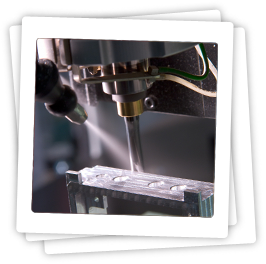There are a number of manufacturers in the US who may feel threatened by 3D printing. Injection molding plants, thermoformers, and machine shops all are in the cross hairs as rapid prototyping becomes more mainstream. Some of these companies will continue on their path will continue business as usual, and though they might stick around things will be different. Other companies like First American Plastic, who typically focused on contract manufacturing are looking to 3D printers to expand their business and better serve customers. With a new Stratasys 3d printer they can create prototype parts in a fraction of the time and complexity of old methods. Where it may take 3-4 existing manufacturing processes to create a part a 3D printer can be setup to run the exact same part even overnight. This not only means savings for the manufacturer but also faster service for customers. With the ability to create fast prototypes a traditional manufacturing house can focus on getting customers out of the R&D stage and into production where the real profit lies.
By focusing on the service aspect of 3D printing and providing timely delivery of prototypes manufacturers can free up engineers to develop new systems. One of the intriguing uses of the Statasys I noticed on the First American Plastic website is the ability to quickly fabricate jigs, fixtures and molds for thermoforming. Simple molds are easy enough to create, a sample printed mold is shown at the MakerBot site, but that is just the tip. Because a 3D printer create a part in layers there are unique geometries and functions they can output. This is what most excites me about printing. As more and more engineers have time to experiment the jigs and fixtures they dream up could revolutionize all sorts of manufacturing processes.
Of course 3D printing is not limited to simple plastics. Some machines are even capable of printing tool steel! One of my past experiences was with a contract manufacturer where we often created mold inserts for low volume production runs. The process was time consuming. First the steel insert was machined on a CNC machine. Then for complex or finely detailed parts an EDM (Electrical Discharge Machine) was used to further burn the cavity. This required the machine of multiple electrodes, sometimes up to a half dozen individual machined copper components. Finally the base mold the insert was sitting into would have to be checked for fit and cooling lines.
 First American Plastic First American Plastic |
| One of the many machining processes that can be eliminated with 3D printing |
Had we managed to get our hands on a 3D Printing machine that could hit tolerances in tool steel it would have been possible to skip right over the designing of electrodes and machine of the tool and simply print the insert. Just think of all the time savings. Even without the use of printed tool steel Objet is putting out materials showing how their systems can be used to create inserts that mimic this fashion. A white paper is available (.pdf link) that does a great job of showing the capabilities.
Of course printing prototypes and injection molding tools is not something everyone will be doing enough to justify an at home printer. For 3D printing to get into living rooms everywhere a whole new sub-industry will have to rise. As was noted by Conor Maccormack in our recent interview “You can give someone a typewriter but that doesn’t make them Shakespeare”. Some of the handy things that would be easy to print, like these garden tools, are still extremely difficult to design for everyday use. Your average Lawyer or CPA has not had the training to design and print a fence post cap if it has threads, for that you will still need an Industrial Designer or Engineer.
It is exciting to talk about the major impact that 3D Printing will have. This Bloomberg video poses an interesting question about the worldwide scope of that impact. “Will 3D Printing Kill Asia’s Manufacturers?” Whether or not it does is a bigger question than I am willing to tackle but what I am certain of is that it provides companies a new tool to create and innovate if they are willing.
Check out more posts about 3D Printing technology and the 3D Printing Industry.
This post was sponsored by First American Plastic.
